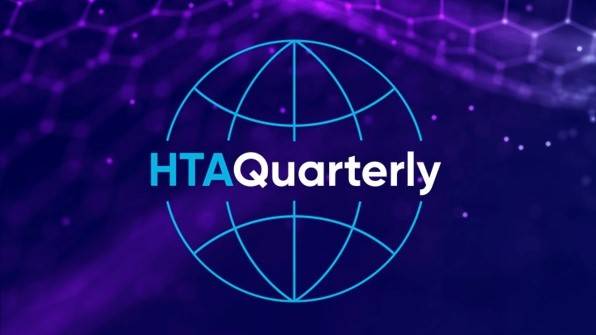Having the right local setup to comply with country pharmacovigilance obligations

Managing these differences requires Marketing Authorization Holders (MAH) to have global and local expertise, but many companies have insufficient local safety resources. Moreover, experience shows that case reporting is regarded as a non-core activity, which adds to the risk of not meeting submission requirements, and consequently can put patient safety and even business reputation at risk.
These issues are further exacerbated when dealing with novel or high-risk therapies, which have proportionately higher safety management costs, greater safety obligations and additional risk minimization measures (RMM), as is the case with advanced medicinal therapy products (ATMPs) in the EU. [2],[3] Marketing authorization holders (MAHs) also need to monitor the local medical literature in the native language relevant to their products and submit individual case safety reports (ICSR) into EudraVigilance and national safety databases. [4]
Maneuvering through a varied regulations landscape
Pharmaceutical companies are expanding their presence globally. With that expansion, however, comes the challenge of navigating diverse and evolving regulations. One area that presents particular barriers for companies is the highly regulated field of pharmacovigilance and the need to meet regional and country-level pharmacovigilance requirements. [1]
Managing these differences requires Marketing Authorization Holders (MAH) to have global and local expertise, but many companies have insufficient local safety resources. Moreover, experience shows that case reporting is regarded as a non-core activity, which adds to the risk of not meeting submission requirements, and consequently can put patient safety and even business reputation at risk.
These issues are further exacerbated when dealing with novel or high-risk therapies, which have proportionately higher safety management costs, greater safety obligations and additional risk minimization measures (RMM), as is the case with advanced medicinal therapy products (ATMPs) in the EU. [2],[3] Marketing authorization holders (MAHs) also need to monitor the local medical literature in the native language relevant to their products and submit individual case safety reports (ICSR) into EudraVigilance and national safety databases. [4]
Address the PV challenges at the local level
This complex environment underscores the importance of finding a way to standardize the management of individual case safety reporting (ICSR) processing while meeting local requirements. One way to address this widely diverse landscape is to adopt hub concepts where ICSR processing is globally coordinated with standardized processes while having on-the-ground local expertise to address country-specific requirements and perform follow-up activities. That will require having experienced in-country or regional native PV experts and global oversight of activities across the globe.
When entering new markets, it is important to conduct a proper gap analysis of the local requirements and potential risks. Companies should also make sure that local PV staff members are experienced and properly trained on PV obligations to address compliance with local requirements and are ready for inspections. All these activities require extensive resources and proper oversight of activities worldwide. Outsourcing the local pharmacovigilance activities can help to reduce costs, give companies greater assurance that they are meeting their local PV obligations, and allow them to focus on other core activities.
- Comparative evaluation of pharmacovigilance regulation of the United States, United Kingdom, Canada, India and the need for global harmonized practices, Perspect Clin Res. 2018 Oct-Dec. https://www.ncbi.nlm.nih.gov/pmc/articles/PMC6176689/
- Regulation (EC) No 1394/2007 of the European Parliament and of the Council of 13 November 2007 on advanced therapy medicinal products and amending Directive 2001/83/EC and Regulation (EC) No 726/2004, European Union. https://eur-lex.europa.eu/legal-content/en/ALL/?uri=CELEX%3A32007R1394
- Risk Management Plans for ATMPs, Biopharma Excellence. https://www.biopharma-excellence.com/2021-6-13-risk-management-plans-for-atmps/
- Medical literature monitoring, EMA. https://www.ema.europa.eu/en/human-regulatory-overview/post-authorisation/pharmacovigilance-post-authorisation/medical-literature-monitoring
- Good Pharmacovigilance Practices and Pharmacoepidemiologic Assessment, FDA. https://www.fda.gov/regulatory-information/search-fda-guidance-documents/good-pharmacovigilance-practices-and-pharmacoepidemiologic-assessment
- Information on the Member States requirement for the nomination of a pharmacovigilance (PhV) contact person at national level, EMA. https://www.ema.europa.eu/en/documents/other/information-member-states-requirement-nomination-pharmacovigilance-phv-contact-person-national-level_en.pdf
Disclaimer: This blog is intended to communicate PharmaLex’s capabilities which are backed by the author’s expertise. However, PharmaLex US Corporation and its parent, Cencora, Inc., strongly encourage readers to review the references provided with this article and all available information related to the topics mentioned herein and to rely on their own experience and expertise in making decisions related thereto as the article may contain certain marketing statements and does not constitute legal advice.
Connect with our team

Cencora.com is providing automated translations to assist in reading the website in languages other than English. For these translations, reasonable efforts have been made to provide an accurate translation, however, no automated translation is perfect nor is it intended to replace human translators. These translations are provided as a service to users of Cencora.com and are provided "as is." No warranty of any kind, either expressed or implied, is made as to the accuracy, reliability, or correctness of any of these translations made from English into any other language. Some content (such as images, videos, Flash, etc.) may not be accurately translated due to the limitations of the translation software.
Any discrepancies or differences created in translating this content from English into another language are not binding and have no legal effect for compliance, enforcement, or any other purpose. If any errors are identified, please contact us. If any questions arise related to the accuracy of the information contained in these translations, please refer to the English version of the page.



